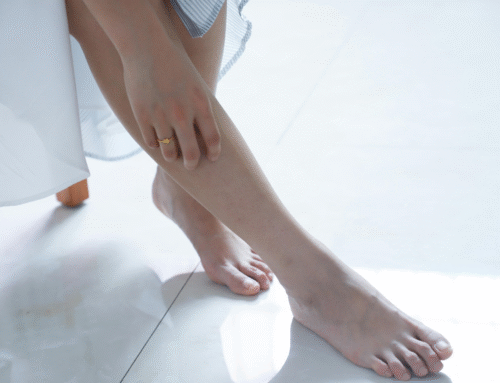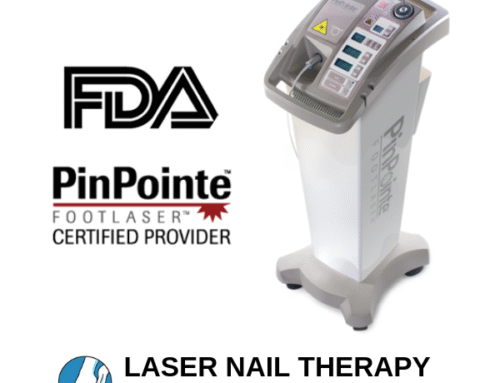Toenail fungus treatments in Dallas can be difficult to find. The most common toenail fungus treatments are topical solutions, oral medication, and laser treatment. Most people try out topical medication. This is because it is the easiest to get. Our nail doctors would first consult you. They would determine if you have a fungus. After, they will let you know the best treatment option for you.
What causes Toenail Fungus?
Fungus, including yeast and mold, is typically the cause of nail infections. And most are caused by a group of fungi called dermatophytes. These fungi can live in the layer of dead skin around your nails, in the space under your nail, and in the nail itself.
Fungal nail infections often result from damage to the nail plate or the surrounding area. Skin infections or athlete’s foot invade the nail, causing the infection. Up to 30 percent of patients with fungal nail infections also have fungal skin infections.
Hot, sweaty feet in fully enclosed shoes provide the ideal warm, damp environment for fungi to thrive.
Factors that increase the risk of nail infections are:
- nail damage (e.g., activities that cause trauma to the nail)
- medical conditions such as diabetes, psoriasis, or a weakened immune system
- smoking
- general poor health
- using shared washing facilities without slippers

Is Toenail Fungus Contagious?
Toenail Fungus infections are highly contagious. Nail fungus can be easily spread and infect healthy toenails or fingernails. People with nail fungus are also likely to spread this disease to others. Since nail fungus is an infectious disease, there is also a chance of re-infection. Therefore, patients who have eliminated toenail fungus should still be careful and follow some basic precautions to prevent fungus recurrence. We recommend using the anti-fungal spray for feet and shoes, keeping feet clean and dry, and changing socks daily.
Nail Fungus Prevention
Prevention of nail fungus is important. One way of getting a nail fungus is skin-to-skin contact with people who already have it or other fungal infections on their skin, such as Athlete’s foot. Another way of getting fungi in your nails is through objects. You can get nail fungus by walking barefoot in a warm and moist area, such as a public pool, or by sharing an infected nail clipper or shoes.
In addition to those conditions above, simply age can be a factor too – older adults are more prone to getting fungal nail infections. If you have these conditions above, be extra careful with the fungal nail infection. If you notice any changes in your nails, ask your doctor immediately.
Treatment Options
The most common treatment option is topical solutions. They have a cure rate of about five to ten percent. This is because the topical solution does not penetrate all the way through the nail bed. All the fungus must die to be cured. Also, all topical medication is given over the counter. It is not a strong medication.
Another treatment option is oral medications. This has a cure rate of about sixty percent. Although it is higher than topicals, it can be dangerous. Our nail doctors do not recommend oral medication because it can lead to liver toxicity. Furthermore, you would need constant blood tests. This is to ensure your liver is not being damaged.

Why do you need a Podiatrist?
Doctors specialize in all kinds of areas. Some specialize in the skin, while others specialize in the eyes. Seeing a normal physician is excellent. But if you know that there is a doctor out there who is trained in a specific area, it is probably best to go see that doctor instead. When it comes to your feet, you should see a podiatrist. If you have nail fungus, you’ll be happy to know that podiatrists have lots of experience treating nail fungus. They are experts at dealing with it. We can help you find a podiatrist near you to help alleviate any foot problems you might have.
As you are now aware, podiatrists are trained to be able to diagnose and treat all ailments pertaining to the feet. Toenail fungus happens to be one of the more common ailments that people get. For years, podiatrists have studied toenail fungus and have learned about a variety of different nail fungus treatment options ranging from oral medications to laser treatment.
It is for this reason that the best thing you can do before treating your toenail fungus is to consult with a podiatrist. If you want to get a second opinion from your regular doctor as well, that is fine, but keep in mind that a podiatrist will almost certainly be more knowledgeable on the subject. Once a podiatrist has been able to look at your feet, this foot doctor will suggest the best toenail fungus treatment option for you. The sooner you seek out the help of a podiatrist, the sooner your toenail fungus will go away.
Laser Treatment for a Toenail Fungus
Toenail fungus treatments in Dallas can vary. If you have caught nail fungus, it can be easily treated using the FDA-approved PinPointe laser, which typically only takes one treatment. Other treatments, like topical solutions and oral medication, are not as effective. Topical solutions have a very low cure rate. This is because the solution does not penetrate all the way through the nail bed. Oral medication has a higher cure rate than topicals, but our nail doctors do not recommend it. This is because it can lead to liver toxicity. You would need to have consistent blood tests throughout the course of taking the medication.
Our nail doctor in Dallas, TX, recommends this treatment for toenail fungus. The PinPointe Laser treatment has the highest cure rate in the market. It has no side effects and no recovery period. As a result, you can go about your daily activities right after the treatment. Also, there’s no pain.
If you have any signs of nail fungus, call us at 800-672-0625 at our Dallas, TX location, or visit our website for more information on our doctors at one of our over 150 locations.
Fun things to do in Dallas, TX
Dallas, Texas, is a vibrant metropolis that blends rich history, modern innovation, and classic Southern charm. Known for its towering skyline, diverse neighborhoods, and thriving arts and culinary scenes, the city offers something for everyone.
The most historic landmarks
Dallas is a city that perfectly balances modern sophistication with deep-rooted history and Southern charm. One of the most iconic places to begin exploring is The Sixth Floor Museum at Dealey Plaza, which chronicles the life, presidency, and assassination of President John F. Kennedy. Located in the former Texas School Book Depository, this museum provides a moving insight into one of America’s most defining moments. Afterward, visitors can head to the Reunion Tower, one of Dallas’s most recognizable landmarks. Its observation deck offers panoramic views of the city skyline, making it a favorite for both tourists and locals. Just nearby, the Dallas Holocaust and Human Rights Museum offers a powerful and educational experience, promoting awareness and reflection on humanity’s most significant struggles and triumphs. Together, these historic sites capture the spirit of learning, remembrance, and progress that define Dallas.
Fun in the outdoors
Beyond its historical importance, Dallas shines as a city of art, gardens, and outdoor enjoyment. The Dallas Arboretum and Botanical Garden offers 66 acres of beautifully landscaped grounds, complete with seasonal blooms and lakeside views that create a peaceful escape from the urban rush. Visitors can stroll through vibrant floral displays, enjoy picnics, or attend one of the many outdoor events hosted throughout the year. Meanwhile, Klyde Warren Park, built over a freeway, is a unique urban oasis connecting downtown and uptown Dallas. It’s the perfect spot for yoga classes, food trucks, and casual gatherings. For art enthusiasts, the Dallas Museum of Art houses an impressive collection of works from around the world, ranging from ancient artifacts to modern masterpieces. These cultural hubs make it clear that Dallas values creativity and community as much as its booming economy.
Family fun adventures
Families visiting the city will find plenty of fun and educational attractions. The Dallas Zoo, one of the largest in Texas, is home to more than 2,000 animals and features immersive exhibits such as the “Giants of the Savanna,” where elephants, giraffes, and zebras roam in naturalistic settings. The Dallas World Aquarium is another family favorite, offering an indoor rainforest filled with exotic birds, fish, and marine life that amaze visitors of all ages. For a touch of nostalgia, the McKinney Avenue Trolley offers free rides through the Uptown district, giving travelers a charming way to explore the area while learning a bit about Dallas’s transportation history. These family-friendly attractions make the city a wonderful destination for travelers seeking a mix of excitement and relaxation.
Good food and good times
No trip to Dallas is complete without exploring its distinctive neighborhoods and rich culinary scene. Deep Ellum is the heart of Dallas’s creative energy, famous for its colorful murals, live music, and nightlife that perfectly capture the city’s artistic side. The Bishop Arts District, on the other hand, is known for its boutique shops, independent restaurants, and local charm. Visitors can savor world-class Texas barbecue, classic Southern comfort food, or upscale dining options throughout the city. Whether wandering through vibrant streets or enjoying a meal under twinkling patio lights, Dallas offers a dynamic blend of culture, flavor, and hospitality that makes it one of the most exciting destinations in the Lone Star State.
Schedule a Consultation
If you have any signs of toenail fungus, don’t wait. Our Dallas, TX nail doctors offer the PinPointe laser treatment, the most effective and safe method for curing toenail fungus. Call us today at (800) 672-0625 or visit our website to schedule a free consultation at a location near you.




